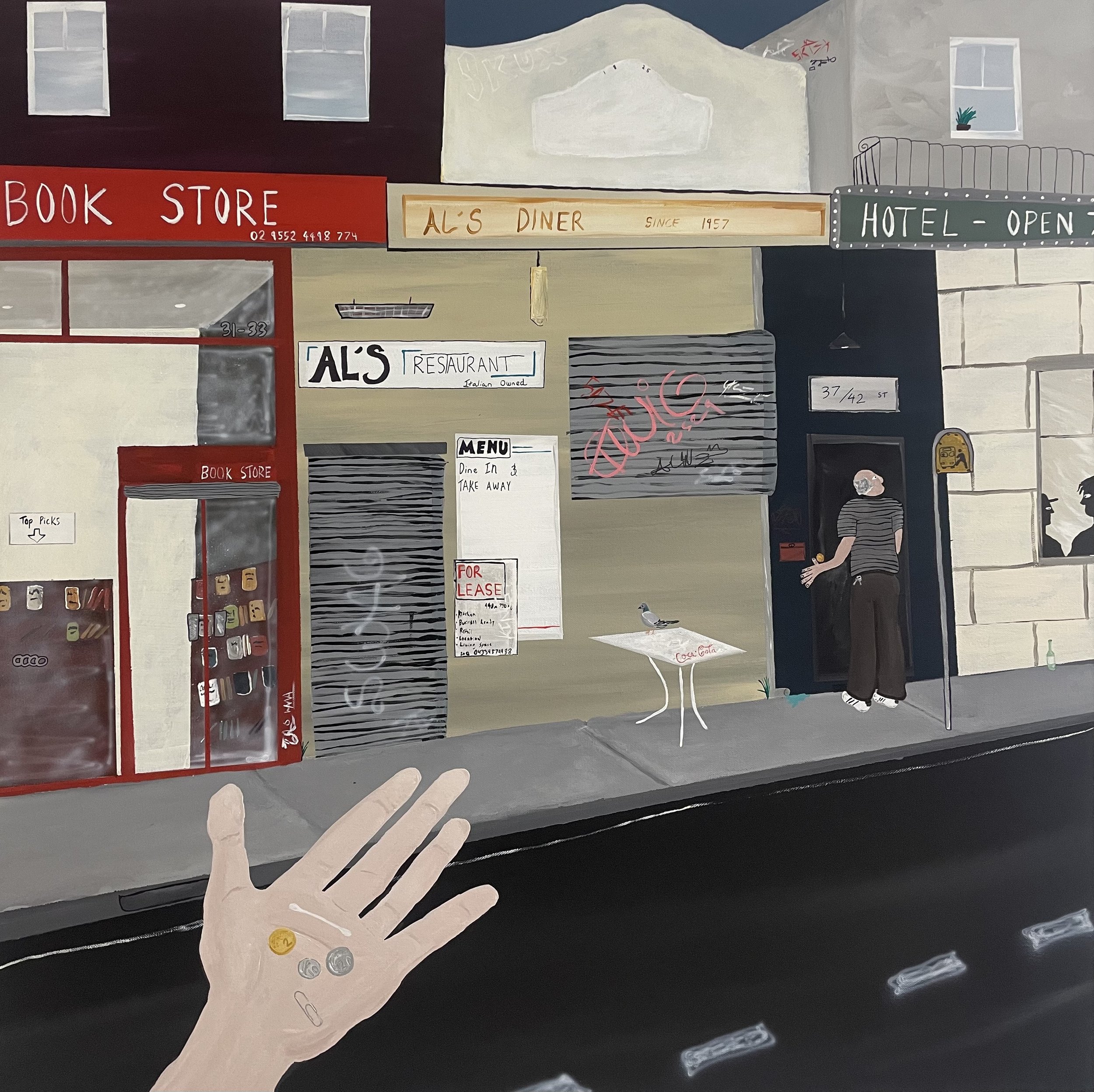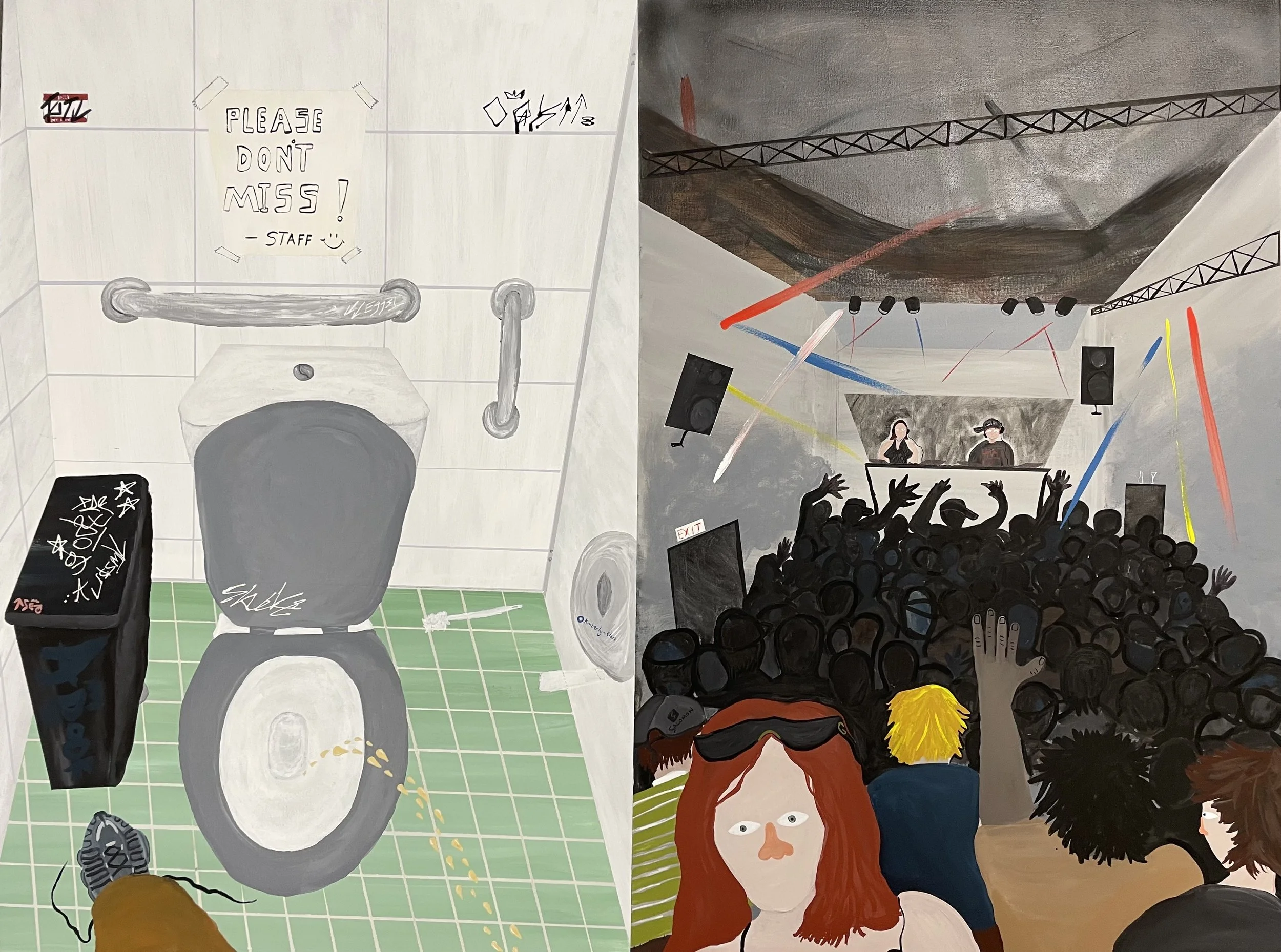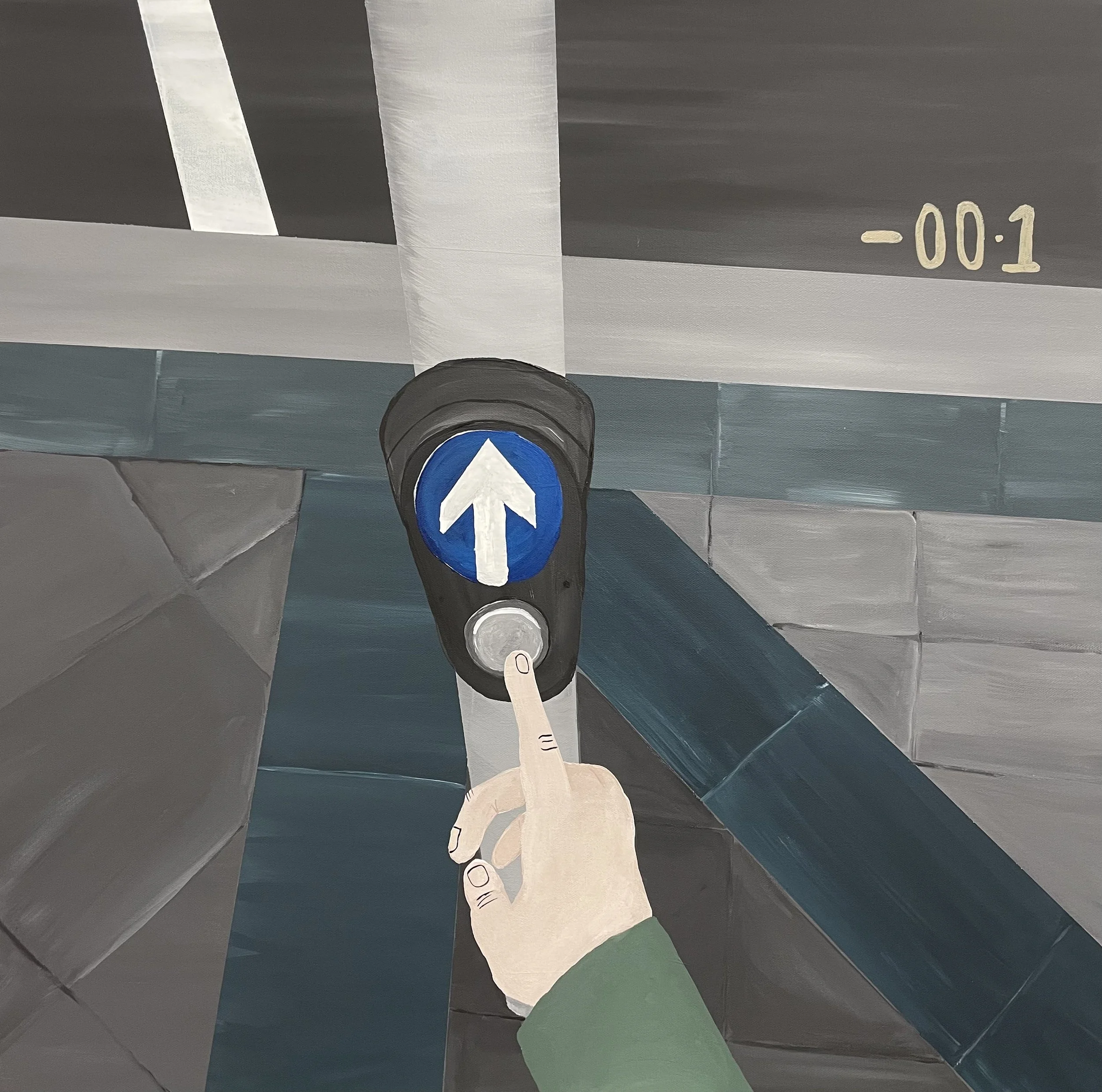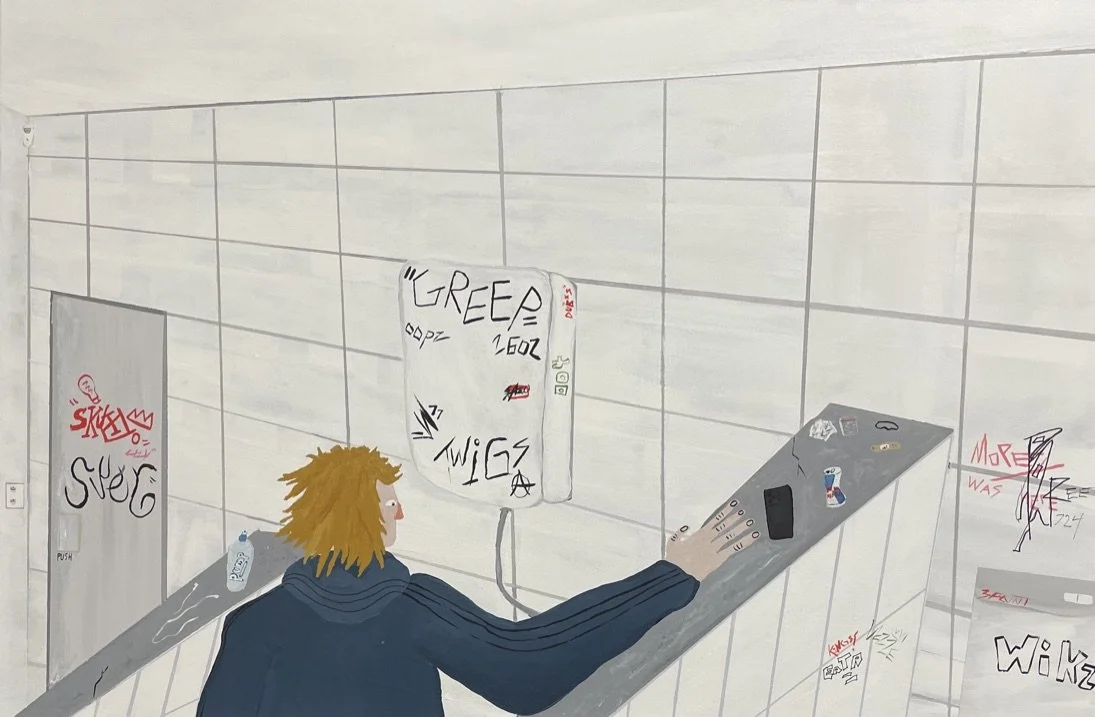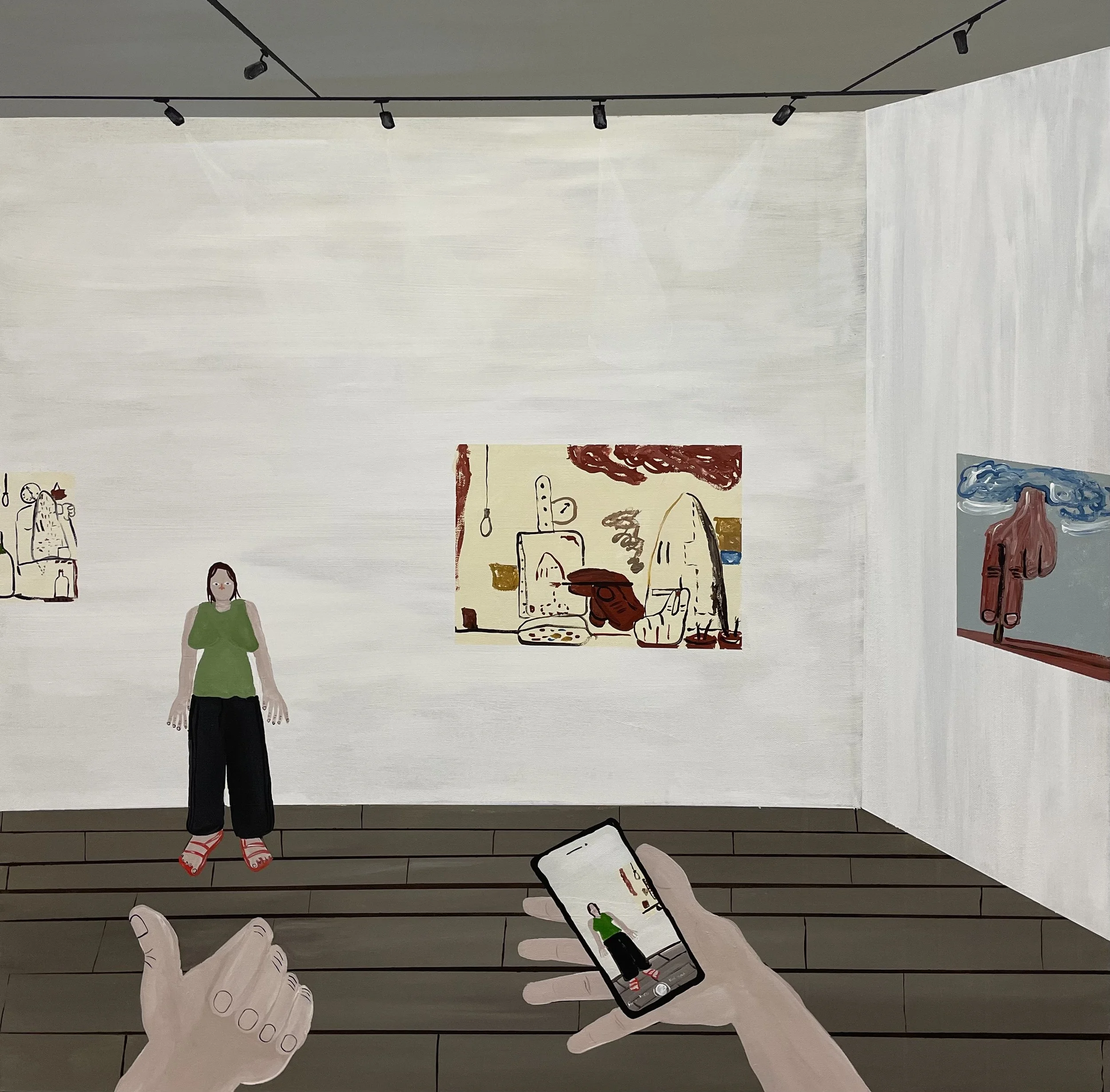
IS THIS US
Jackson Taylor
21 - 30 November 2025, Platform
Exhibition opening: 6pm Thursday 20 November 2025
Jackson Taylor’s Is this us? extends his ongoing investigations into shared everyday experiences. Through faux-naïve figurative paintings, Taylor explores notions of the mundane, transforming everyday scenes into opportunities to meditate on contemporary life where viewers might find connection and familiarity.
The exhibition dwells on the ‘in-between’ of daily life to explore moments that are ordinary, shared, and strangely slippery – waiting for the destination of a train trip, going to the bathroom on a night out, the slow choreography of a salon visit. The works carry the texture of memory; graffiti glimpsed, rubbish underfoot, strangers’ mid-routine, while refusing visual cues like smiling faces or colour-coded emotion.
Philip Guston famously said that a painter has two choices: to paint the world around them, or to paint themselves. The paintings in Is this us? assemble recognisable spaces and objects into detailed genre scenes that remain open, balancing clarity and doubt as to whether the perspective presented is one individual and personal to the artist, or one that is common to all of us.
Jackson is a recipient of the 2025 Canberra Contemporary ANU School of Art & Design Emerging Artist Support Scheme Mentorship and Exhibition Award.
Exhibition essay by artist Litia Roko
I thought it was weird when you picked us to make a documentary, but all in all, I think an ordinary paper company like Dunder Mifflin was a great subject for a documentary. There’s a lot of beauty in ordinary things. Isn’t that kind of the point?
— Pam Beesly, The Office
The political, like the purloined letter, is hidden in the everyday, exactly where it is most obvious: in the contradictions of lived experience, in the most banal and repetitive gestures of everyday life – the commute, the errand, the appointment. It is in the midst of the utterly ordinary, in the space where dominant relations of production are tirelessly and relentlessly reproduced, that we must look for utopian and political aspirations to crystallize.
— Kristin Ross, The Politics and Poetics of Everyday Life
In their book Attention Equals Life, literary scholar Andrew Epstein writes that we are hungry for representations of everyday life; that in contemporary culture there exists a “potent longing for an increased connection to the everyday, and for greater knowledge about daily life.”1 Since the 1990s, this desire has manifested across visual culture from reality TV shows to programs that centre on the mundane like Seinfeld or The Office, from Humans of New York to the ‘a day in my life’ TikTok trend. Representations of daily life reign supreme on social media platforms; the everyday is everywhere and we all lap it up.
Increasingly, our desire to consume the everyday is inseparable from the attention economy as both site and symptom of alienation – but as the main stage of human existence, as Epstein argues, letting the everyday come into focus has the potential to change the way it is both understood and lived.1 Jackson Taylor approaches the everyday as a counterbalance to the crisis of attention; both for himself as an artist whose practice is driven by a relentless, forensic fixation on the details of daily life, but also for viewers of his work. For Taylor, the everyday is a site of convergence where the choreography of mundanity is an avenue for connection.
His paintings have long investigated the everyday; grocery shopping, meals shared, taking the rubbish out. In his signature faux-naïve figurative style, Taylor transforms the mundane into paintings marked by familiarity that invite viewers to consider memory and shared experience within the habits and pressures of the here and now.
At the opening of a recent exhibition by Taylor at the Goulburn Regional Art Gallery, I heard one person say to another: “I feel like I’ve sat at that table a hundred times,” and in response: “it’s like the dining room of every mouldy inner-north share house I’ve lived in.” I was content mining and an art opening is a distracting affair, so I didn’t memorise as much as I set out to, but this one exchange summarises them all. Viewers of Taylor’s work seem not only to find their own habits and histories in his paintings, but in my experience, they seem to find them together.
The everyday is contradictory and anything but universal; as Taylor has written, “everyone goes to the supermarket, but not everyone feels the same at the checkout.” He treats perspective as a narrative tool, using it to place viewers within the spatial logic of scenes where recognition becomes a generative force. Precluding cues that might anchor or insist interpretation with restraint, the paintings invite viewers to read the works through the lens of their own experience. It is through this ambiguity that each painting almost borrows a notion of the everyday from the viewer, foregrounding their role not only in the construction of the work, but in the complexities of the everyday itself.
In an extension of his ongoing research, Is this us? hones in on what Taylor describes as the ‘in- between moments’ within the regimented routines of the everyday. The paintings are marked by a sense of coming and going, and though they do present a sense of suspension, these intervals are treated as more than pauses between events; they are where the workings of daily life become legible. They suggest that looking closely is not a passive act, and that to pay attention is to be involved. In a culture that is always looking elsewhere, Is this us? asks us to stay with what is already here, for how else are we ever meant to move forward?





